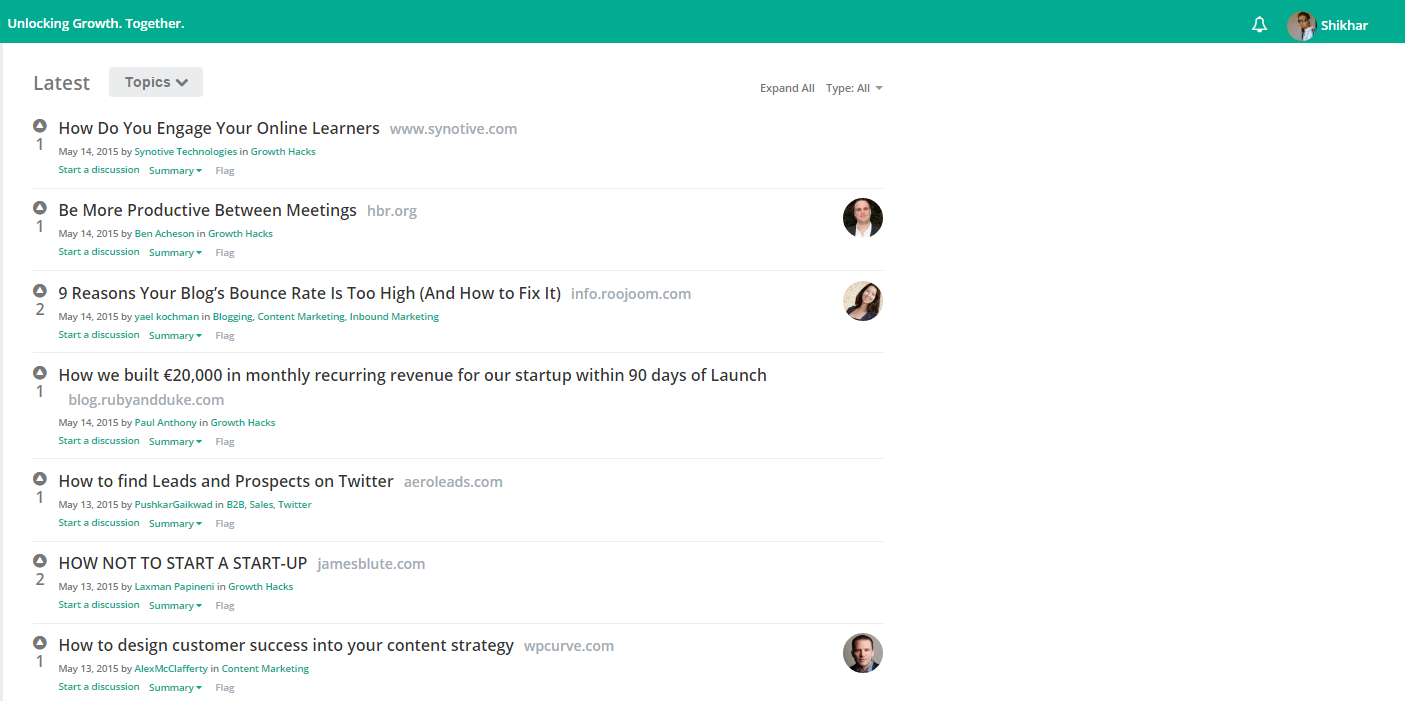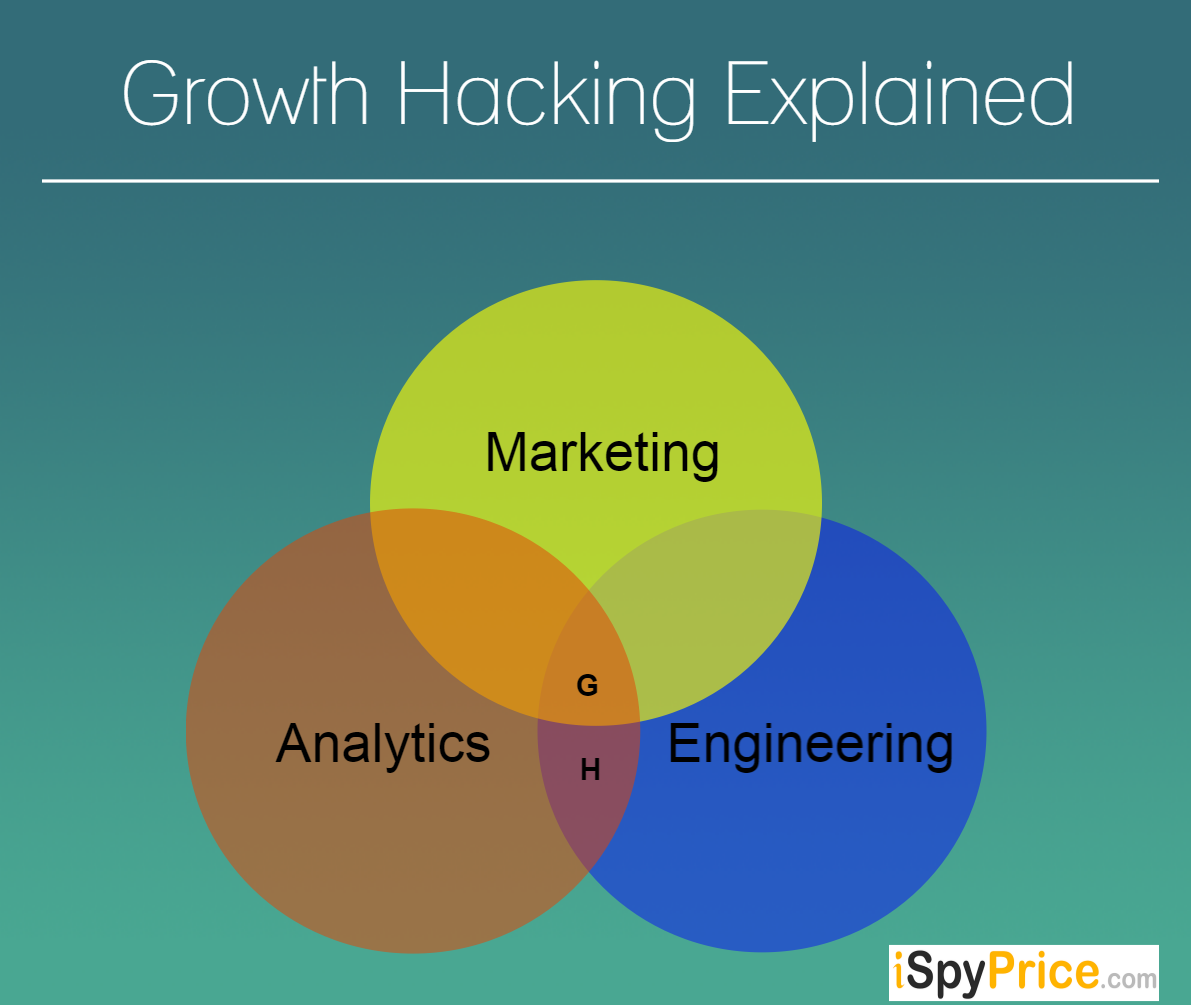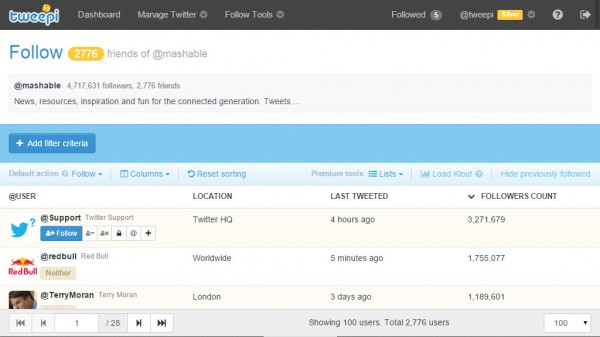Understanding E-commerce Growth Hacking And Using Apps To Hack Your Way To Success: Tweepi
by May 14, 2015 2,862 views3
Growth hacking has been a buzzword in the last few years, but do e-commerce business owners really understand how to translate this buzzword into something worthwhile for their businesses? Our experience in interacting with some up and coming e-commerce players in the market says “no, they don’t”.
In order to use growth hacks successfully brands must understand that growth hacking is not the same as marketing. In fact, marketers and growth hackers are two totally different breed of people. Marketers guess. Growth hackers use data to arrive at hypotheses that may, or may not, prove successful based on how they are implemented in hacks.
These hacks are experiments derived out of those hypotheses. These experiments are what separate marketers from growth hackers. Growth hackers are not afraid of failing. They try until they succeed. Marketers cannot afford to fail, which is why they often take shortcuts that sometimes prove detrimental to their, or their client’s, business.
So when it comes to e-commerce growth hacking, remember that anybody who tells you that they can help you generate hundreds and thousands of leads in one month, or bring unprecedented traffic to your website, is not a growth hacker. They are making tall claims based on their previous experience, which doesn’t guarantee success, but the probability of failure is high. Growth hackers on the other hand will give you a reasonable chance of success by constantly experimenting and finding hacks that work best for your kind of business.
If you are just starting out in e-commerce it is important to understand the distinction between a marketer and a growth hacker as outlined above. And now that you have a reasonable understanding of how growth hackers approach a business, let’s acquaint you with some applications based around the growth hacking paradigm in the e-commerce realm. These apps will help you find potential customers on Twitter, an extremely important medium for e-commerce brands.
Social media marketers have done spectacularly well in their line of work, but they have created some of the most spectacular myths around social media platforms such as facebook and Twitter. The most prominent of these myths is that social media is meant primarily for brand promotion. Nothing could be further from the truth.
While social media is, and should be, used for promotional activities its impact is best understood when performance metrics are measured. The metrics associated with performance of promotional campaigns on social media are likes, comments, tweets, retweets, share, etc. The first 3 are vanity metrics and are not indicative of the true success of a promotional campaign. The last 2 are important reach metrics and are indicative of the reach of a promotional campaign. None of these, and other such metrics, translate into a measure of social media performance. This brings us to the performance metrics that really matter – lead generation, customer acquisition, and customer retention.
These 3 metrics are also the pillars on which e-commerce businesses are built. So how do you growth hack your way to e-commerce stardom? That’s what we are here to tell you today.
Growth hacking is often an iterative process that takes dozens of iterations to make something work better than it was working previously. The good news is that there are apps available in the market today that you can use to subtly hack your way to e-commerce growth.

We have decided to share with our readers a list of some of the most useful growth hacking apps that we have used for growth hacking purposes of our own. Therefore, we hope you find these apps useful and that you are able to use them to find potential customers for your e-commerce brand just as some of the other top brands in your niche have done.
This week we cover one of the most useful Twitter management apps out there – Tweepi.
Tweepi is an incredible social media management app. It allows its customers to analyze data from their Twitter accounts. This data can then be used to find potential customers.
The central idea behind creating a brand account on Twitter is engaging with your customers, understanding their needs, and using the data around these two to improve your overall brand engagement that will, hopefully, result in customer acquisitions and sales.
This is where Tweepi fits in perfectly. On Twitter, it bridges all the gaps between finding potential customers and turning them into paying customers and then some. Tweepi allows you to track details about people who follow you, people who don’t follow you, people who have stopped following you, and people you may want to follow.
Finding actionable insights about followers is the Twitter equivalent of hitting a home run or, better still, striking gold. Tweepi considers a number of metrics to give you insights on who to follow and unfollow. These metrics include, but are not restricted to, number of tweets, retweets, links in tweets, ratio between link and follow, replies, Klout score, and of course followers.
You can use Tweepi to target users and build a follower base that is highly likely to transition into a customer base because of the strong social connection that they share with your brand. This strong connection is what Tweepi essentially helps you build.
Another way to use Tweepi to growth hack your way into finding new potential customers is to use tweet search. You can do this by searching for a keyword that best fits any twitter campaigns you might be launching. Let’s assume your e-store sells fruit baskets online and during Christmas the demand for a certain type of basket, say the tangerine basket , is in demand. You would want to reach as many potential buyers as possible so you start a hashtag campaign on twitter.
Before starting this campaign, or even during the course of this campaign, you can use Tweepi to search for hashtags relative to tangerine. Once you see results that show people talking about tangerine in their tweets you can start following them and at the same time tweet something that is related to their tweet about tangerine. When users are notified of a new follower they are likely to check your profile, as most people do on Twitter, and the first tweet they find on your profile will be extremely relevant to them.
Like I said earlier, growth hacking is about experimenting to find what works best for your business. You can use Tweepi to understand a ton of different user behaviors and then use that information to influence a buying decision by creating positive engagement with your target users.
We hope you found this growth hack useful. Keep watching this space for many more growth hacks coming your way in the upcoming weeks.







![5 iNcredible iPhone Facts Nobody Is Willing To Tell You [Infographic] iPhone_6_PLUS](https://www.ispyprice.com/blog/wp-content/uploads/2015/05/iPhone_6_PLUS-e1431755767125.jpg)